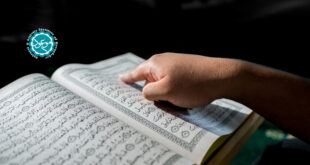The above report is present in Imam Shafei’s Kifayah. In addition to this it is also mentioned in the following books:
(2) Kanzul Ibaad (3) Khazina Riwayat (4) Matalibul Momineen (5) Fatawa Alamgiri
This report also justifies kissing of graves. Praise be to Allah for this.
(D) It is the Sunnah of Imams
Now, as per my promise let me also inform you that Amir al-Mu’minin (a.s) had also made replicas of graves and we emulate him in this matter too. As we all know, when Lady Fatima (s.a.) passed away from the world she was infuriated with Abu Bakr and Umar. Hence she had made a bequest that these two must not be allowed to come near her bier, and that is why Amir al-Mu’minin (a.s) had her buried in the dead of the night. Moreover, there was a strong possibility, as later events showed, that the two Shaykhs may dig up her grave to recite the burial prayers on her again, therefore Amir al-Mu’minin (a.s) made seven mock-up graves in different spots so none could tell which was the actual resting place of Lady Fatima. Please read the following reports:
Asbagh bin Nubata asked Amir al-Mu’minin (a.s) the wisdom behind conducting the burial of Fatima (s.a.) in the dead of the night. He told him that Lady Fatima (s.a.) was angry with a group of people and she didn’t want them to attend her funeral…And people have narrated that Amir al-Mu’minin (a.s) made seven duplicate graves around the actual grave of Fatima so that no one could know which was her real grave. Another report says that he sprinkled water on forty graves, so that her real grave could not be distinguished…(Until the end of the report).35
Due to this, difference of opinion arose as to the location of the grave of Fatima (s.a.). It is mentioned in Manaqib Ibn Shahre Aashob and Biharul Anwar (ibid) that:
“The grave of Lady Fatima (s.a.) is in the Baqi cemetery while some people say that she was buried at her own house, while yet others are of the opinion that her grave is between the grave of the Messenger and his pulpit.”
Anyway, we have proved that His Eminence,‘Ali (a.s) had also constructed replicas of graves. It would not be of any use if you say that he made replicas of graves for one purpose and we make it for some other aim. Hence how it could be emulation? Because the actual purpose was to prove that if making replicas of graves had itself been an unlawful act why the Holy Imam (a.s) had performed it? So when this act was lawful and the Imam acted upon it also, what doubt remains in it being the practice (Sunnah) of Imam? After this, justification of other symbols of Azadari like the Alam, the Mashk and the cradle etc. is not even needed because it is the Ta’ziyah which is mostly criticized since it is the replica of grave. While other things are not even replicas of grave!
The public display (taking out in procession) of Zuljana can be justified as follows:
That neither is it our creation, that it may be called a replica of a living thing and thus considered unlawful and nor does anyone worships it, that it could be called an idol. Although if someone were to make a replica of a horse, it is unlawful and if someone worships it, it is indeed a prohibited act. But if it is not so, it is only a representation of Imam Husayn’s horse and there is no unlawful aspect to this representation. Rather it is a recommended and preferable deed, which is also rewardable. Because it assists in intensifying the mourning for Husayn (a.s) and the famous Sunni book, Hasanut Tawassul Fi Aadaab Ziyarat Afzalur Rosol, that anything that assists in a recommended deed is also recommended.36
Therefore since Zuljana is a part of Azadari, it is also recommended.
Majlis (Mourning Assembly)
(A) The Prophet’s Sunnah is Practical
Thus when the Messenger of Allah (s.a.w) returned from the battle of Uhad, and did not hear any wailing from the house of the Chief of the Martyrs, Hamzah, while wails were audible from the houses of other martyrs, he (s.a.w) said: “Are there no women to weep on Hamzah?”
When Saad bin Maaz, Usaid bin Hazeer and other Ansars (Helpers) heard this, they went to their houses and told their ladies that first they should go to Hamzah’s house and weep and then come back to mourn their own martyrs. The ladies of Ansar, went to Hamzah’s place between the Evening and the Night Prayer time and continued to weep and wail until midnight. During this time the Messenger of Allah (s.a.w) awoke and asked what that wailing was. When he learnt the facts he was pleased and he blessed the ladies who had performed this mourning for Hamzah saying: May Allah be pleased with you. May He be pleased with your children.
The above incident is recorded in all books of Islamic history. Inspite of this you may look up in Rauzatus Safa, Vol. 2 (Events following the battle of Uhad). Also refer to Madarijun Nubuwwah and Maarijun Nubuwwah.
In the incident quoted above, some women of different families gathered to mourn a martyr who was not having any family relations with them.
And this assembly and this weeping was according to the will of the Holy Prophet (s.a.w) and he had desired it. Majlis is also held for the same type of mourning. It is also a gathering of people belonging to different families. The noteworthy point here is that when the Messenger of Allah (s.a.w) made such elaborate arrangements for the mourning for His Eminence, Hamzah, what he would have done had he been present after the tragedy of Karbala’. The devotees of the Prophet should think upon it and in accordance with his wishes make arrangements for holding Majalis of Husayn (a.s).
(B) The Prophet’s Sunnah is Verbal
The sad utterance of the Holy Prophet (s.a.w):
“But for Hamzah, there is none to weep on him!”
And after that his praying for those who wept on Hamzah shows that it is the verbal Sunnah of the Prophet.
(C) Sunnah of the Imams
Numerous incidents could be cited under the topic but I shall be content to quote only two or three narrational reports. Though before the martyrdom the prophets’ had held many mourning programs for Imam Husayn (a.s), the first Majlis held after the martyrdom, that is recorded in all histories was the one that was held when Yazid felt that the Syrian people were becoming agitated due to the martyrdom of Husayn (a.s) and the condition of the captivity of Ahl al-Bayt (a.s). Therefore he summoned the people in the Jame Mosque and first his preacher narrated the supposed defects of the Chief of the Martyrs and his ancestors. When he concluded his speech, Imam ‘Ali Ibn Husayn (a.s) sought permission from Yazid to deliver an address and after due praise and exaltation of the Almighty, began to introduce himself. He mentioned his merits then began to describe his afflictions. It is written that at that time the people of Syria began to wail in incontrollable grief. I am omitting the details for the sake of brevity. What I would like to explain is that our preachers today, following the footsteps of the first Zakir of Imam Husayn (a.s) first speak about the merits and praiseworthy qualities of Allah and Ahl al-Bayt (a.s) and then they describe their sorrowful afflictions and tragedies. The Ahl al-Sunnah Imam, Awzai has quoted this complete sermon of Imam ‘Ali Ibn Husayn (a.s). We abstain from quoting it in whole to maintain brevity. However, you may refer to the complete text of this sermon in books like Lohoof, Ihtijaj of Tabarsi, Biharul Anwar Vol. 10, Manaqib Ibn Shahr Aashob and other innumerable books.
The second Majlis was held when Yazid freed the Ahl al-Bayt (a.s) and asked them whether they would like to proceed to Medina or prefer to stay there in Damascus for sometime.
The Ahl al-Bayt (a.s) said: “We would like to first mourn for Husayn (a.s) and weep upon him.” Yazid told them that they were free to do so. Then a number of houses were vacated in Damascus for Ahl al-Bayt (a.s) and there was no Hashemite and Quraishi lady who did not don a black dress in the grief of Imam Husayn (a.s) and the Ahl al-Bayt (a.s) held mourning rituals for Imam Husayn (a.s) for seven days.37
The third Majlis was held at the time of their return to Medina. It was when they arrived at the outskirts of Medina and the whole populace of Medina gathered around their camp. On that juncture, Imam ‘Ali Ibn Husayn (a.s) came out wiping his tears with a handkerchief. An attendant placed a chair for the Holy Imam (a.s). Such a clamor and wailing arose that the ears of the sky had never heard. The Imam (a.s) motioned the people to silence and seating himself in the chair narrated his tragedies their severity and significance. In this Majlis too, the reciter was the Holy Imam (a.s). It is in emulation of these assemblies that we place a pulpit or a chair for the reciter of Majlis (Zakir). This complete episode with the text of the address of the Holy Imam (a.s) is quoted by Sayyid Ibn Tawus in his book, Lohoof. Our discussion is getting prolonged otherwise I would also have described the assemblies organized and held by Imam Ja’far Sadiq (a.s) and Imam ‘Ali Reza (a.s) in which the ladies also assembled behind the curtains to participate in the morning rituals and on which elegies were also recited. However, it is sufficient to say that a word is enough for the wise.
Check Also
15 European Countries With Most Muslims
According to Mouood, quoting by World Atlas: 15 European Countries With Most Muslims By 2050, Muslims …
 Mouood Mouood English Edition
Mouood Mouood English Edition



